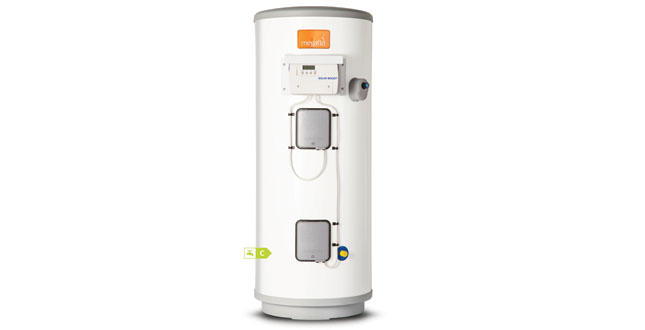

Alan Clarke discusses the latest options for hot water cylinders in properties with multiple bathrooms
Consumer demand for multiple bathrooms is at an all-time high, as homeowners seek to add value to their properties and prospective buyers hunt out their dream home. Consequently, hot water cylinders are a popular choice, with a variety of models available.
Over the last few decades, the bathroom has evolved to become one of the most important rooms in the modern home. When house hunting, 80% of Brits consider the number of bathrooms to be a significant factor, with a typical buyer looking for at least two bathrooms for every three bedrooms, and 37% considering it essential to have an en-suite for every bedroom, according to research by PrimeLocation.
Of course, this growing demand for multi-bathroom homes also results in a higher demand for hot water, with manufacturers investing in the development of new ranges of unvented hot water cylinders in order to meet consumers' varied lifestyles.
With this in mind, it's crucial for installers to be aware of the latest additions to the market, in order to offer homeowners the best possible recommendations.
Space invaders
More and more customers are looking for space saving options. Despite making room for extra bathrooms, the average home is still a massive 44% smaller than it was 90 years ago. According to The Royal Institute of Chartered Surveyors, families in 1924 had around 1,647 square feet to enjoy, while households now share just 925 square feet.
Space being at a premium often encourages consumers to opt for a combi boiler, as they assume it is the best option to fit with their property's smaller footprint.
However, the modern unvented cylinder has been reimagined and new slimline models, which have the same capacity for hot water provision as their larger counterparts, are now available. Slim fit models that feature an internal expansion system mean a faster and neater installation, and save on space as they fit neatly into compact storage areas. These are suitable for customers with high hot water requirements, but minimal space available.
Renewables
Another common consumer concern is energy efficiency. As homeowners become more conscious of environmental issues, it’s important to be aware of renewable options.
For these customers, the first port of call is often solar energy – but what are the options available?
Solar thermal cylinders combine solar heated hot water – delivered via solar collectors positioned on a property's roof – with immersion or boiler heated supply, helping to keep energy bills down while maintaining a reliable source of hot water. What's more, solar-ready options are available, allowing a solar thermal cylinder to be installed, then for solar collectors to be fitted in the future.
Alternatively, for homeowners who already have, or are looking to invest in, solar PV panels, new products have been introduced that can use excess energy from the panels for water heating purposes.
The UK is installing solar panels faster than any other European country. Around 877,000 homes in the UK have solar PV roof panels installed, with almost 4,000 installations carried out in April 2016 alone, according to government figures. However, it is estimated that in 50% of properties, not all the power produced by the PV panels is being consumed. This is because electrical appliances and lighting are not being used during daylight hours when electricity is being generated, as properties are generally unoccupied in the daytime.
In response to this, Heatrae Sadia has designed a cylinder which can use this surplus electricity to heat hot water, reducing utility bills. Any power that is generated in addition to the household's normal requirements will be diverted to the cylinder, rather than being sent to the grid. The water will then be heated to the desired temperature, controlled by a thermostat, ready for the household to use when required, with high-performance insulation keeping the water hot.
To avoid any draw from the grid, a 'buffer' of energy will be retained. Typically, if there is 2.2kW of export energy, the controller will divert 2kW into the cylinder's immersion heater, leaving a 200W buffer. This does not affect any Feed-in tariff generation payments the property owner may have; where there is a 'deemed' usage contract the export tariff is paid whether the energy is consumed or not. Where an export meter is fitted, the benefits can still outweigh the costs of water heating.
No matter what type of cylinder is selected, contractors should seek out cylinders that have been constructed and tested to established British and European standards, as well as being manufactured in a factory which has accredited Quality Management Systems. Third-party approvals – such as WRAS and KIWA – demonstrate good quality and performance, while electrical approvals such as Nemko show compliance with the latest electrical safety requirements.
A rise in average domestic hot water requirements, coupled with homeowners' increasingly diverse needs, means there is now greater choice available when selecting a hot water cylinder. For installers, staying on top of the latest models is crucial when advising homeowners of the most appropriate cylinder for them.
Alan Clarke is technical support manager of Heatrae Sadia
If you'd like to keep up-to-date with the latest developments in the heating and plumbing industry, why not subscribe to our weekly newsletters? Just click the button below and you can ensure all the latest industry news and new product information lands in your inbox every week.